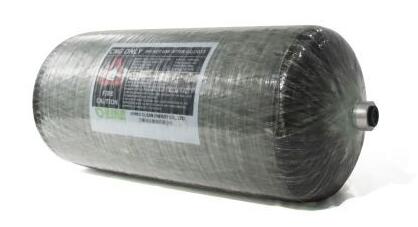Natural gas-powered vehicles (NGVs) have grown in popularity over the past few years, with at least 1.5 million vehicles on the road each year, thanks to the lower price and greener footprint of natural gas compared to traditional fossil fuels.
For the past several decades, the primary focus of gas-powered transportation has been on heavy-duty vehicles (HDVs) - trucks and buses. However, due to the development of new mass production technologies and capabilities that make it possible to manufacture affordable lightweight compressed natural materials, today's composites industry has the ability to target the largest sectors - passenger cars and light commercial vans or light duty vehicles (LDVs). Gas (CNG) cylinders made of glass fiber composites.
While 90% of the cylinders used in the NGV market today are made of steel, this challenge is not impossible to overcome considering the benefits these newly developed fiberglass composite cylinders offer to original equipment manufacturers (OEMs), converters and end users.

Over the past 20 years, the composites industry has focused primarily on the HDV segment. CNG-powered vehicles require more fuel storage space than conventional fossil-fueled vehicles, and therefore need to overcome vehicle design limitations and address the need for increased payload.
This is easily seen, for example, in Europe where many natural gas-fueled city buses are equipped with ultra-lightweight gas cylinders made of carbon fiber composites weighing more than 150 liters on the roof, thus ensuring maximum passenger payload. However, the lighter weight glass fiber composite is a viable economic compromise compared to the more expensive carbon fiber solution. The use of steel is prohibitive because it is heavier, reduces passenger payload, and often requires expensive structural improvement solutions, especially to address vehicle stability issues.
The truck and bus (HDV) segment accounts for approximately 20% of the global gas vehicle fleet and is primarily B2B driven by fleet owners and OEMs, who are experienced in determining the value of weight reduction and determining return on investment.
Innovations exist to meet the LDV market's need for mass production of natural gas cylinders.
1. Light weight (55-60% lighter than equivalent water capacity cylinders)
2. Damage resistance, drop testing, impact penetration, fire resistance, fatigue performance and extreme environmental testing, such as exposure to corrosive acids.
3. Affordable compared to full carbon fiber composite tanks.
Investing in a production line to produce composite natural gas cylinders offers many advantages over steel cylinders. The fiber winding process is more flexible, easier to transfer and consumes much less energy than the multiple processes required to manufacture seamless steel cylinders.
Original equipment manufacturers are realizing the advantages of composite cylinders and have begun to turn to them, believing that these cylinders can offer the benefits of weight reduction.
From a purely technical standpoint, glass fiber reinforced thermoset composite cylinders offer a lot of value to natural gas LDV users. With a 55-60% reduction in cylinder weight (compared to steel), drivers of commercial vehicles benefit from improved payload, better performance, increased safety, lower fuel consumption, vehicle maintenance savings, and overall CO 2 emission reductions.
For multi-purpose vehicles, every kilogram of vehicle weight reduction results in a corresponding and significant increase in payload.
Ultimately, the weight reduction translates into improved performance and better comfort for LDV drivers. Haven't we all experienced that the less loaded a vehicle is, the better the acceleration and the more maneuverable it is? Likewise, haven't we noticed that shorter braking distances help improve our safety?
Replacing fiberglass composite cylinders with steel cylinders makes LDVs lighter and leads to lower fuel consumption (these vehicles are usually dual fuel: gasoline and natural gas). It leads to higher range and savings in fuel purchase costs. Since CO 2 emissions are directly proportional to fuel consumption, the new glass composite cylinders reduce the vehicle's environmental impact.
In addition, never overlook the impact of lightweighting on LDV maintenance, resulting in less tire wear and less premature clutch wear, which is heavily used in urban driving. For those who initially installed cylinders and converted their vehicles to run on natural gas (in addition to gasoline), it is not uncommon for them to switch to lighter cylinders when they become frustrated with the high maintenance and repair costs associated with heavier systems.
Another advantage applies to converters or retrofitters. Cylinders made of fiberglass that are ECE R110 certified can be installed in some LDVs without the need to reinforce the vehicle's suspension system.
Lightweight fiberglass composite cylinders are now a reality and are a viable alternative to steel cylinders in the natural gas LDV market. Certified fiberglass composite cylinders improve vehicle utility, performance and safety, and provide end-users with fuel and maintenance cost savings while reducing the overall environmental impact of the vehicle.
Equally important is the fiberglass industry's ability to manufacture the vast array of products needed to meet the demand for natural gas cylinders in the emerging LDV market.
Previous: Slurry Pump Applications
Next: Rubber Expansion Joint
Copyright:@2020-2021
Comments Please sign in or sign up to post.
0
0 of 500 characters used